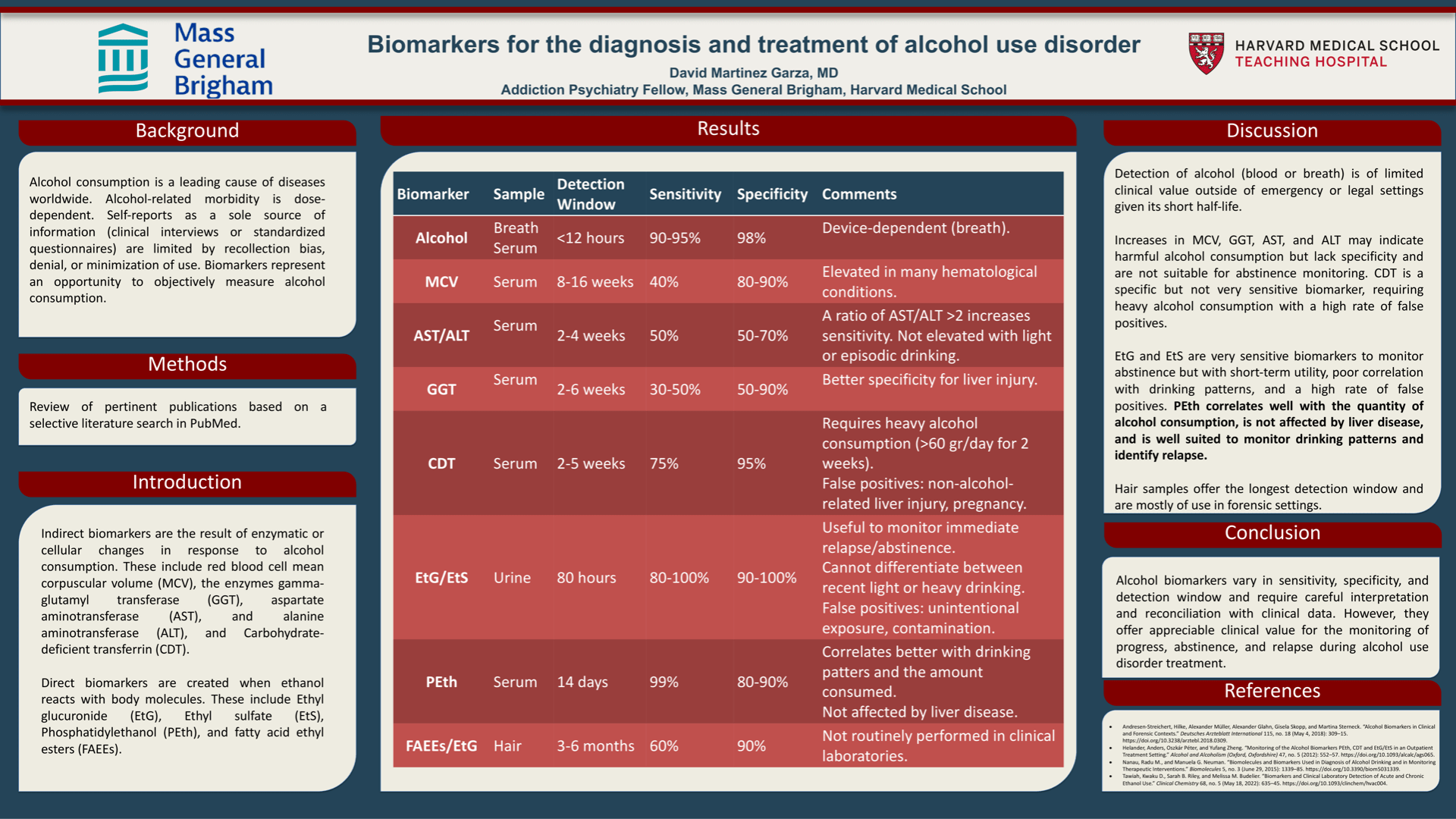Scientific Abstract
Background: Alcohol-related morbidity is dose-dependent. Self-reports of consumption are limited by recollection bias, denial, or minimization. Biomarkers represent an opportunity to objectively measure alcohol consumption.
Methods: Review based on a selective literature search in PubMed.
Results: Detection of alcohol (blood or breath) is of limited clinical value outside of emergency settings given its short half-life (<12 hours). Indirect biomarkers are the result of enzymatic/cellular changes in response to alcohol consumption. Increases in mean corpuscular volume (MCV) and in the activity of the enzymes gamma-glutamyl transferase activity (GGT), aspartate aminotransferase (AST), and alanine aminotransferase (ALT) may indicate harmful alcohol consumption (especially a ratio of AST/ALT >2) but lack specificity and are not suitable for abstinence monitoring. Carbohydrate-deficient transferrin (CDT) in serum (half-life of 12 days) is a specific but not very sensitive biomarker, requiring heavy alcohol consumption (>60 gr/day for 2 weeks) with a high rate of false positives.
Direct biomarkers are created when ethanol reacts with body molecules. Ethyl glucuronide (EtG) and Ethyl sulfate (EtS) in urine are very sensitive biomarkers to monitor abstinence but with short-term utility (<80 hours), poor correlation with drinking patterns a high rate of false positives. Phosphatidylethanol (PEth) in serum remains detectable for up to 14 days, correlates well with the quantity of alcohol consumption, is not affected by liver disease, and is well suited to monitor drinking patterns and identify relapse.
Hair samples (EtG and fatty acid ethyl esters [FAEEs]) offer the longest detection window (3-6 months) and are mostly of use in forensic settings.
Conclusions: Biomarkers require careful interpretation and reconciliation with clinical data. However, they offer appreciable clinical value for the monitoring of progress, abstinence, and relapse during alcohol use disorder treatment.
Search posters

